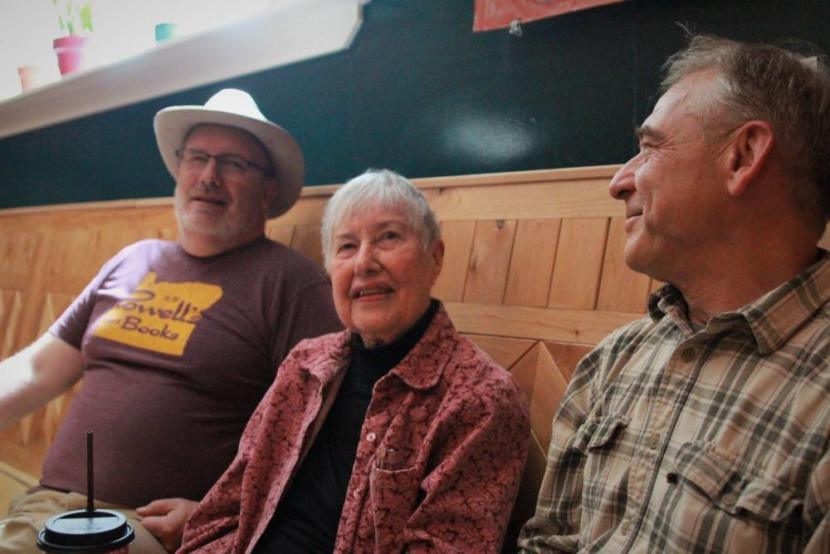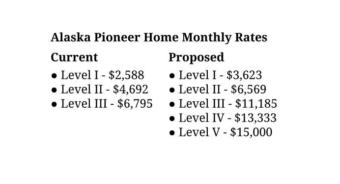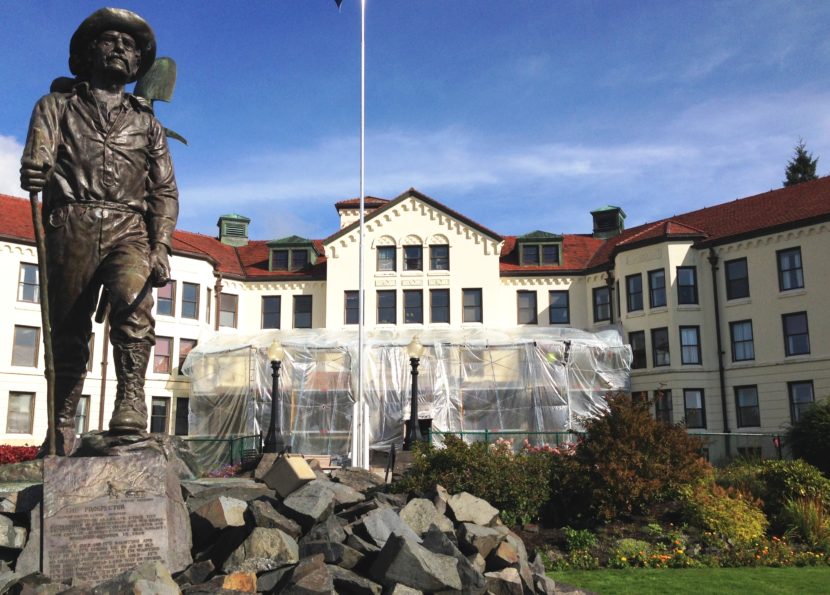
A proposal to more than double the monthly costs for most residents in Alaska Pioneer Homes met with stiff opposition during recent public testimony on the issue.
Family members — and residents themselves — warned the Division of Alaska Pioneer Homes that rate increases could likely backfire. And rather than balancing the budget of Alaska’s subsidized senior care, it could instead send many elder Alaskans out of state.
On paper it sounds really simple. The state director of the Alaska Pioneer Homes, Clinton Lasley, explained the rationale behind the increased rates.
“The rates being proposed in regulation are reflective of the division charging what it costs to provide services,” Lasley said. “Currently, the state has been paying those rates to provide services, but we have not been charging them to the general public.”
In a letter sent to all Pioneer Home residents on Feb. 25, Lasley explained that the state subsidizes their care at a cost of more than $30 million a year.

But the state’s Pioneer Homes — although subsidized — aren’t free. Currently there are three levels of care, ranging in cost from around $2,600 a month to almost $7,000 a month, from residents who can live independently to those who need 24-hour nursing services.
Broadly speaking, the proposal from Gov. Mike Dunleavy’s administration would push rates up by 40% to over 120%, topping out at $15,000 a month for residents with so-called “complex behaviors” like dementia.
During a public hearing held on May 28, simultaneously in all six of the state’s Pioneer Homes, there was significant backlash.
Resident Carol Scott has lived in Alaska for 59 years — the last four in constant worry about meeting her rent at the Anchorage Pioneer Home.
“And then this year, the governor’s proposed budget knocked our twice-mended socks off,” Scott said. “We already were wearing clothes from when we retired 10 to 15 years ago, and our allowance is only $200 a month.”
Scott is referring to a payment assistance strategy used by the Pioneer Homes to ensure residents that their bills are paid as much as possible through personal income — with at least $200 left over each month. She went on to call the proposed rate structure preposterous and unaffordable for Alaskans.
Ninety-four-year-old Nancy Ricketts, a resident in the Sitka Pioneer Home, testified that the proposed rate structure undermined her plans to remain self-sufficient.
“I sold my house to be able to afford the rates as much as possible here at the Pioneer Home,” Ricketts explained. “I planned carefully so that I could remain in control of expenses. I remain in the best health possible to maintain these goals for the rest of my life.”
Ricketts said that the added stress of paying higher bills would likely force her health — and that of many of her neighbors — into decline.
Aves Thompson, whose wife is in the memory care unit of the Anchorage Pioneer Home, said he paid 100% of her bill out-of-pocket. The proposed rate increase, in his family’s case, could end up costing the state more.
“The cost increase will drive my wife out of the Pioneer Home,” Thompson said. “This means that this private payer will no longer be paying the entire amount of the fee. The replacement will, more than likely, receive state or federal subsidy to pay the bill, as they will be about the only ones who can afford to be in the Pioneer Home.”

The Division of Alaska Pioneer Homes took testimony from its facilities in Anchorage, Fairbanks, Palmer, Juneau, Ketchikan, Sitka and from people calling in over the phone. Much of the testimony focused on the ramifications of the dramatic increases, but some focused on the timeline.
Lauren Wilde’s mother is a “Level III” resident of the Sitka Pioneer Home who pays $6,800 per month for care. Under the administration’s proposal, her mother would be at “Level V” care and pay $15,000 a month — according to Wilde, that’s more than the combined income of her parents when they were working.
Wilde understands that costs are going to rise, but these changes were coming too fast.
“People need time to figure out how they’re going to adapt to increasing costs,” Wilde argued. “Instead of increasing incrementally over time, you’ve put forward a plan to more than double the costs for my mom within about four month’s time. You’re not giving us enough time to figure out how to cope with these changes. And obviously these are not small changes. We’re talking about $160,000 a year.”
Wilde’s mother, along with Thompson’s wife, are in the majority in Alaska Pioneer Homes, where 56% of residents are currently in “Level III” care.
The Alaska Legislature has also weighed in on the timing of increases. On May 28 — the same day as the public hearing — 19 members of the House of Representatives sent a letter to Clinton Lasley and his boss, Commissioner Adam Crum of the state’s Department of Health and Social Services, urging the department to use House Bill 96 as a guideline for setting rates in the Pioneer Homes.
HB 96 allows for a one-time reset of the basic rate structure in the Pioneer Homes, and then “reasonable and regular rate increases” keyed to the Social Security cost-of-living benchmark.
HB 96 passed overwhelmingly in the House by a 35-4 vote on May 10. The bill is now parked in the Senate Health and Social Services Committee.
The Department of Health and Social Services is taking public comment on the proposed changes to the Pioneer Home rates through June 28. After that, the department could implement the new regulations at any time.
